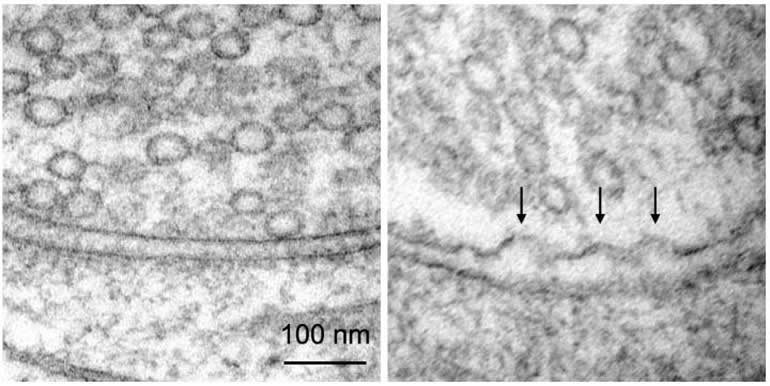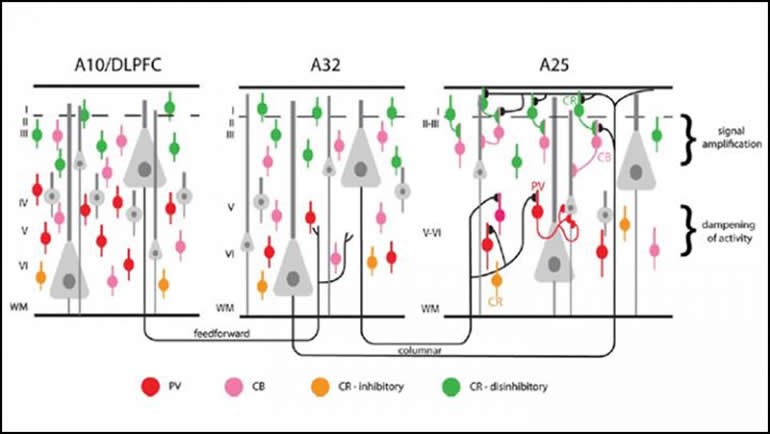Tuesday, 4 May 2021
Neuroscientifically Challenged: a highly educational website about neuroscience
 This week I want to tell you about a highly educational website that offers a wealth of information about neuroscience. Its name is Neuroscientifically Challenged, and its author is Marc Dingman. Dingman began blogging about neuuroscience in 2008, as his interest in the subject was growing. He took a break from writing the site in 2010 to concentrate on finishing his doctorate in neuroscience, which he received in 2014, when he also accepted a teaching assignment at his university. Neuroscientifically Challenged is aimed at the general public, but Dingman draws his references directly from peer-reviewed scientific articles and monographs on neuroscience. (more…)
This week I want to tell you about a highly educational website that offers a wealth of information about neuroscience. Its name is Neuroscientifically Challenged, and its author is Marc Dingman. Dingman began blogging about neuuroscience in 2008, as his interest in the subject was growing. He took a break from writing the site in 2010 to concentrate on finishing his doctorate in neuroscience, which he received in 2014, when he also accepted a teaching assignment at his university. Neuroscientifically Challenged is aimed at the general public, but Dingman draws his references directly from peer-reviewed scientific articles and monographs on neuroscience. (more…)
From the Simple to the Complex | Comments Closed
Monday, 19 April 2021
Evolution : a branching pattern like a bush, not a linear one

The word “hominids” is often used to refer to the human line that diverged from chimpanzees some 6 or 7 million years ago. It includes not only all the species of the genus Homo, bus also some related genera, such as Australopithecus, that are now extinct. The evolutionary history of our human line has been determined from findings of fossils, some consisting of just a few bone fragments or teeth. These fossils have shown that human evolution has followed a branching pattern, like a bush, and not a linear pattern like you see above, where the chimpanzee starts losing hair, walking more upright, and becomes Homo sapiens, only to end up working hunched over again, first with an industrial tool and then at a computer. There are various versions of this image—some show Homo sapiens in a suit and tie, or riding a bicycle—but all of them convey several false ideas about human evolution. (more…)
Evolution and the Brain | Comments Closed
Thursday, 1 April 2021
The incredible speed of synaptic transmission

Sometimes you think you know all about a subject because you’ve been making presentations about it for years, or even decades. But then you read one article that makes you realize just how much you didn’t know. That’s what just happened to me. The subject was synaptic transmission, and the article was Synaptic vesicles transiently dock to refill release sites, published in the journal Nature Neuroscience in September 2020. The principal authors of this study, Grant F. Kusick and Shigeki Watanabe of the Johns Hopkins University School of Medicine in the United States, used a cell-imaging technique called “zap-and-freeze” to analyze how neurons release neurotransmitters into synapses. What these authors specifically wanted to understand was how the synaptic vesicles near the tip of an axon (the synaptic button), which fuse with its plasma membrane to release neurotransmitters into the synaptic gap, subsequently form again so that the neuron can be ready to handle the next nerve impulse. Because several tens or even several hundreds of nerve impulses can all arrive at the same synaptic button at one time, the authors reasoned, these vesicles must re-form extremely rapidly for there to be enough of them ready to release neurotransmitters again as soon as the next impulse arrives. (more…)
From the Simple to the Complex | Comments Closed
Tuesday, 9 March 2021
Two very different approaches to identify functional connections between brain areas
 Two recent studies have shown yet again that many more different parts of the brain are often involved in a given mental phenomenon than was once believed. In the brain, nothing is really isolated, and there are no “centres” of anything. Instead, we’re always dealing with multiple interconnected areas of the brain that form networks as demanded by the situations faced or the tasks to be performed. What’s most interesting about these two particular studies is that the researchers used two very different approaches to identify functional connections between brain areas: in one study, they visually traced the path of the axons projected by certain neurons, while in the other, they used genetic methods to isolate a new kind of membrane receptor. (more…)
Two recent studies have shown yet again that many more different parts of the brain are often involved in a given mental phenomenon than was once believed. In the brain, nothing is really isolated, and there are no “centres” of anything. Instead, we’re always dealing with multiple interconnected areas of the brain that form networks as demanded by the situations faced or the tasks to be performed. What’s most interesting about these two particular studies is that the researchers used two very different approaches to identify functional connections between brain areas: in one study, they visually traced the path of the axons projected by certain neurons, while in the other, they used genetic methods to isolate a new kind of membrane receptor. (more…)
Emotions and the Brain, Memory and the Brain | Comments Closed
Thursday, 11 February 2021
Revisiting an optical illusion in terms of predictive processing
 I recently came across a little experiment that I posted years ago on this website to show how the blind spot in each of your eyes works. The blind spot is a part of the retina where there are no photoreceptors, because it is where the axons of the retina’s ganglion cells converge and exit the eye, forming the optical nerve. As a result, there’s a corresponding area in your field of vision that doesn’t register on the retina. Hence, in theory, you shouldn’t see anything there. But in reality, you don’t see any such blank spot in your field of vision.
I recently came across a little experiment that I posted years ago on this website to show how the blind spot in each of your eyes works. The blind spot is a part of the retina where there are no photoreceptors, because it is where the axons of the retina’s ganglion cells converge and exit the eye, forming the optical nerve. As a result, there’s a corresponding area in your field of vision that doesn’t register on the retina. Hence, in theory, you shouldn’t see anything there. But in reality, you don’t see any such blank spot in your field of vision.
To find out why not, let’s revisit this optical illusion from the standpoint of predictive-processing theory, which has become more and more accepted in cognitive science over the past 10 years or so. (more…)
The Senses | Comments Closed







